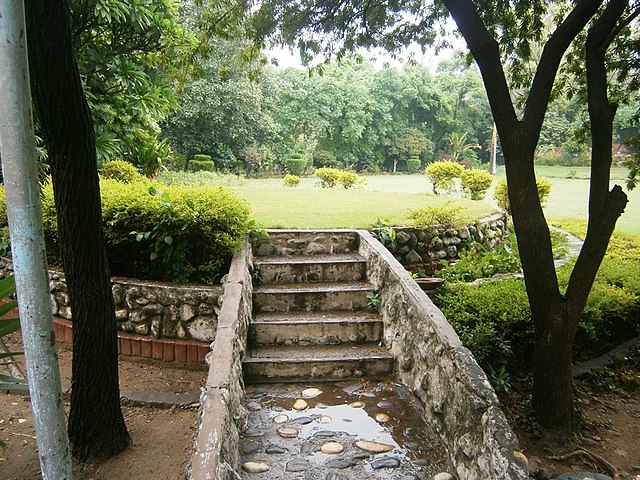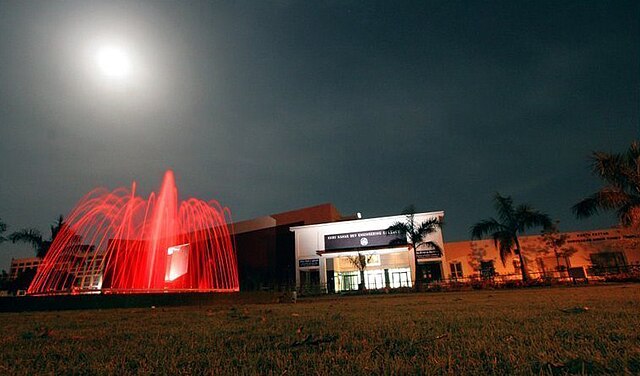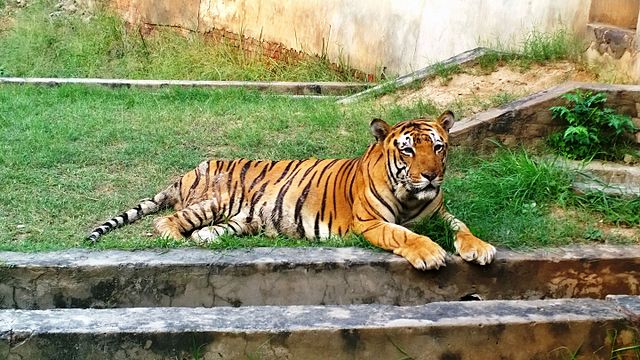Have you ever wondered what makes a city the industrial backbone of an entire state? Welcome to Ludhiana, a bustling metropolis that perfectly blends traditional Punjabi culture with modern industrial prowess. This comprehensive guide will take you through everything you need to know about this remarkable city that’s often called the “Manchester of India.”
What Makes Ludhiana Special?
Ludhiana isn’t just another city on the map – it’s a phenomenon. With a population exceeding 1.6 million, it stands as Punjab’s largest city and one of India’s most significant industrial centers. But what truly sets it apart?
The Manchester of India
Why do people call Ludhiana the “Manchester of India”? The answer lies in its incredible textile and manufacturing capabilities. Just as Manchester was the heart of England’s Industrial Revolution, Ludhiana has become the industrial pulse of Northern India. The city produces everything from world-class textiles to agricultural machinery, making it an economic powerhouse that contributes significantly to India’s GDP.
The comparison isn’t just about industry – it’s about innovation, resilience, and the entrepreneurial spirit that flows through the city’s veins. Walk through any industrial area, and you’ll witness the same energy and determination that once defined Manchester’s golden age.
Strategic Location and Connectivity
Location, location, location – that’s what makes Ludhiana a commercial goldmine. Strategically positioned in the heart of Punjab, the city serves as a crucial link between Delhi and Amritsar. This prime location has made it a natural hub for trade and commerce, attracting businesses and investors from across the country.
The city’s connectivity is nothing short of impressive. Whether you’re traveling by road, rail, or air, Ludhiana offers excellent access to major Indian cities. This connectivity has been instrumental in establishing the city as a major distribution center for North India.
A Journey Through Ludhiana’s Rich History
Every great city has a story, and Ludhiana’s tale is both fascinating and inspiring. Let’s take a walk through time and discover how this industrial giant came to be.
Ancient Origins and Founding
The history of Ludhiana dates back to the 15th century when it was founded by the Lodhi dynasty. The city’s name itself is believed to be derived from the Lodhi clan, though some historians suggest it comes from “Ludhiana,” meaning “the place of Lodhi.”
During the Mughal era, the region saw significant development, with agriculture forming the backbone of the local economy. The fertile plains of Punjab provided ideal conditions for farming, laying the foundation for the city’s future prosperity.
Colonial Era and Independence Movement
The British colonial period marked a turning point for Ludhiana. The construction of the Grand Trunk Road and the railway network in the 19th century transformed the city into an important commercial center. The British recognized the region’s agricultural potential and established various administrative centers here.
During India’s freedom struggle, Ludhiana played a significant role. Many freedom fighters from the city participated in the independence movement, contributing to the larger cause of liberating India from British rule.
Post-Independence Growth

The real transformation of Ludhiana began after India’s independence in 1947. The partition led to a massive influx of refugees, many of whom were skilled craftsmen and entrepreneurs. This demographic shift brought new energy and expertise to the city, catalyzing its industrial growth.
The Green Revolution of the 1960s further boosted Ludhiana’s importance. As Punjab became India’s granary, Ludhiana emerged as the center for agricultural equipment manufacturing, supporting farmers across the country.
Industrial Powerhouse: Ludhiana’s Economic Landscape
What makes Ludhiana tick? The answer lies in its diverse and robust industrial base. The city has successfully diversified its economy across multiple sectors, creating a resilient business ecosystem.
Textile and Garment Industry
The textile industry is undoubtedly Ludhiana’s crown jewel. The city houses thousands of textile units, from small-scale hosiery manufacturers to large export houses. The famous “Ludhiana shawl” and knitwear products are exported worldwide, contributing billions to India’s export earnings.
What’s remarkable about Ludhiana’s textile industry is its adaptability. From traditional handloom products to modern machine-made garments, the city has embraced technology while maintaining its artisanal heritage. The cluster-based approach has enabled small manufacturers to compete globally while maintaining cost efficiency.
Agricultural Equipment Manufacturing
Ludhiana is synonymous with agricultural machinery in India. The city produces everything from tractors and harvesters to smaller farming implements. Companies like Mahindra & Mahindra have significant operations here, while hundreds of smaller manufacturers create a thriving ecosystem.
This sector’s success stems from Ludhiana’s deep understanding of Indian farming needs. Local manufacturers don’t just produce equipment; they innovate solutions specifically designed for Indian agricultural conditions.
Sports Goods Production
Here’s something that might surprise you – Ludhiana is one of India’s largest sports goods manufacturing centers. The city produces equipment for various sports, with particular expertise in certain areas.
Hockey Equipment Excellence
Ludhiana has carved out a special niche in hockey equipment manufacturing. The city produces high-quality hockey sticks, balls, and protective gear that are used by players worldwide. This specialization has made Ludhiana a globally recognized name in hockey circles.
Cultural Heritage and Traditions
While Ludhiana is known for its industrial prowess, its cultural richness is equally impressive. The city is a living museum of Punjabi traditions, where ancient customs blend seamlessly with modern life.
Punjabi Culture at Its Best
Walking through Ludhiana’s streets, you’ll experience authentic Punjabi culture in all its glory. The warmth of the people, the vibrancy of the markets, and the energy of daily life reflect the true spirit of Punjab. The city has managed to preserve its cultural identity despite rapid modernization.
The local dialect, customs, and social practices remain deeply rooted in Punjabi traditions. Whether it’s the way business is conducted or how families celebrate together, Ludhiana maintains its cultural authenticity.
Festivals and Celebrations
Ludhiana knows how to celebrate! The city comes alive during festivals, with elaborate celebrations that showcase the joy and enthusiasm of Punjabi culture.
Baisakhi Celebrations
Baisakhi, the harvest festival, is celebrated with unmatched enthusiasm in Ludhiana. The entire city participates in the festivities, with colorful processions, traditional dances, and community gatherings. The celebration reflects the city’s agricultural roots and the importance of farming in Punjabi culture.
Diwali and Other Festivals
Diwali in Ludhiana is a spectacular affair. Markets light up with decorations, homes are adorned with diyas, and the air fills with excitement. Other festivals like Karva Chauth, Holi, and Gurpurab are celebrated with equal fervor, making Ludhiana a city that truly knows how to embrace joy.
Must-Visit Attractions in Ludhiana
Thinking of visiting Ludhiana? You’re in for a treat! The city offers a perfect blend of historical sites, modern attractions, and cultural experiences.
Historical Sites and Monuments
Ludhiana’s historical attractions tell the story of its rich past. The Punjab Agricultural University Museum showcases the region’s agricultural heritage, while various gurudwaras reflect the spiritual side of Punjabi culture. These sites offer visitors a glimpse into the city’s evolution over the centuries.
Parks and Recreation Areas
The city hasn’t forgotten the importance of green spaces. Several parks and recreational areas provide residents and visitors with peaceful retreats from urban life. These spaces are perfect for morning walks, family picnics, or simply relaxing amidst nature.
Shopping Destinations
Shopping in Ludhiana is an experience in itself! From bustling local markets selling traditional Punjabi items to modern shopping malls offering international brands, the city caters to every shopping preference. The local markets are particularly famous for textiles, woolens, and traditional Punjabi clothing.
The Food Scene: A Culinary Paradise
If you’re a food lover, Ludhiana will steal your heart! The city’s culinary scene is a delightful journey through authentic Punjabi flavors and innovative fusion cuisines.
Traditional Punjabi Cuisine
Ludhiana serves some of the most authentic Punjabi food you’ll ever taste. From creamy dal makhani and buttery naan to spicy chole bhature and rich lassi, every dish tells a story of Punjabi hospitality and love for good food. The local dhabas (roadside eateries) are legendary for their taste and generous portions.
Street Food Culture
The street food scene in Ludhiana is absolutely incredible! Golgappas, tikki chaat, and samosas are just the beginning. The city has its own unique street food variations that you won’t find anywhere else. The evening food markets come alive with vendors selling everything from traditional snacks to modern fusion foods.
Popular Restaurants and Eateries
From upscale restaurants serving contemporary cuisine to traditional dhabas maintaining age-old recipes, Ludhiana’s dining scene caters to every palate and budget. Many establishments have been serving families for generations, becoming integral parts of the city’s cultural fabric.
Education Hub: Colleges and Universities

Education has always been a priority in Ludhiana, and the city hosts several prestigious educational institutions that attract students from across India and abroad.
Punjab Agricultural University
The Punjab Agricultural University (PAU) is one of India’s premier agricultural universities. Established in 1962, PAU has played a crucial role in India’s Green Revolution. The university’s research and development work has significantly contributed to increasing agricultural productivity across the country.
The campus itself is a landmark, with beautiful grounds and state-of-the-art facilities. Students from around the world come here to study various aspects of agriculture, making it a truly international educational hub.
Other Notable Educational Institutions
Beyond PAU, Ludhiana hosts numerous colleges and institutions offering courses in engineering, medicine, management, and liberal arts. These institutions contribute to the city’s intellectual atmosphere and provide skilled professionals to support local industries.
Transportation and Connectivity
Getting to and around Ludhiana is remarkably convenient, thanks to excellent transportation infrastructure that connects the city to major destinations across India.
Road Networks
Ludhiana sits at the intersection of major highways, making road travel extremely convenient. The Grand Trunk Road (NH-1) passes through the city, connecting it directly to Delhi and other major cities. The road network within the city is well-developed, though traffic can be busy during peak hours.
Railway Connections
The city’s railway station is a major junction on the Delhi-Amritsar route. Regular trains connect Ludhiana to cities across India, making it easily accessible for business and leisure travelers. The railway infrastructure has been instrumental in the city’s industrial development, facilitating the movement of goods and raw materials.
Air Connectivity
While Ludhiana doesn’t have its own commercial airport, the Sahnewal Airport near Chandigarh is just about an hour’s drive away. This proximity to air connectivity ensures that Ludhiana remains well-connected to national and international destinations.
Living in Ludhiana: Residential Areas
Considering making Ludhiana your home? The city offers diverse residential options catering to different lifestyles and budgets.
Popular Neighborhoods
Ludhiana’s residential areas range from traditional neighborhoods with strong community bonds to modern developments with contemporary amenities. Each area has its own character and charm, offering residents various lifestyle choices.
Some areas are known for their proximity to industrial zones, making them popular among business families, while others are preferred for their peaceful environment and good schools.
Housing Market Trends
The real estate market in Ludhiana has shown steady growth over the years. The city offers relatively affordable housing compared to metropolitan cities, while still providing good infrastructure and amenities. This affordability, combined with economic opportunities, makes Ludhiana an attractive destination for both investors and homebuyers.
Future Prospects and Development
Ludhiana isn’t resting on its laurels – the city is actively working towards a brighter, more sustainable future.
Smart City Initiatives
As part of India’s Smart Cities Mission, Ludhiana is implementing various technology-driven solutions to improve urban living. These initiatives focus on better traffic management, waste management, and digital governance to enhance the quality of life for residents.
Infrastructure Projects
Several infrastructure projects are underway to support Ludhiana’s continued growth. These include improvements to transportation networks, expansion of industrial areas, and development of new residential zones. Such projects ensure that the city can accommodate future growth while maintaining its livability.
Conclusion
Ludhiana stands as a testament to what vision, hard work, and entrepreneurial spirit can achieve. From its humble beginnings as a small town to becoming Punjab’s largest city and India’s industrial powerhouse, Ludhiana’s journey is truly inspiring.
The city successfully balances tradition with modernity, creating an environment where businesses thrive while cultural values remain strong. Whether you’re an entrepreneur looking for opportunities, a student seeking quality education, or a traveler wanting to experience authentic Punjabi culture, Ludhiana has something special to offer.
As the city continues to evolve and grow, it maintains its core identity – that of a place where dreams become reality through determination and hard work. Ludhiana isn’t just the Manchester of India; it’s a city that represents the aspirations and achievements of modern India.
Frequently Asked Questions
Q1: What is Ludhiana famous for?
Ludhiana is famous for being India’s largest textile and garment manufacturing hub, earning it the nickname “Manchester of India.” The city is also known for agricultural equipment manufacturing, sports goods production, and its vibrant Punjabi culture.
Q2: How far is Ludhiana from major cities like Delhi and Chandigarh?
Ludhiana is approximately 300 kilometers from Delhi (about 5-6 hours by road) and around 100 kilometers from Chandigarh (about 2 hours by road). It’s well-connected by road and rail to both cities.
Q3: What are the best places to visit in Ludhiana for tourists?
Popular attractions include the Punjab Agricultural University campus, various historical gurudwaras, local markets for shopping (especially for textiles), Nehru Rose Garden, and the bustling food streets for experiencing authentic Punjabi cuisine.
Q4: Is Ludhiana a good place for business and investment?
Yes, Ludhiana offers excellent business opportunities, especially in manufacturing, textiles, and agriculture-related industries. The city has good infrastructure, skilled workforce, and strategic location advantages that make it attractive for businesses and investors.
Q5: What is the best time to visit Ludhiana?
The best time to visit Ludhiana is during the winter months (October to March) when the weather is pleasant and comfortable for sightseeing. Summers can be quite hot, while monsoons bring moderate rainfall. Winter is also the festival season, offering visitors a chance to experience local celebrations.

